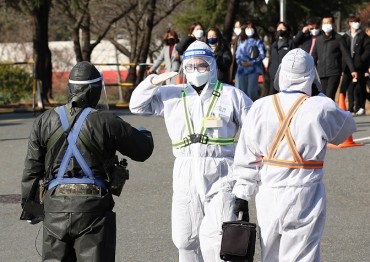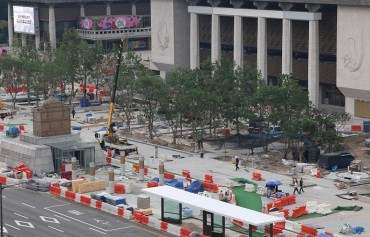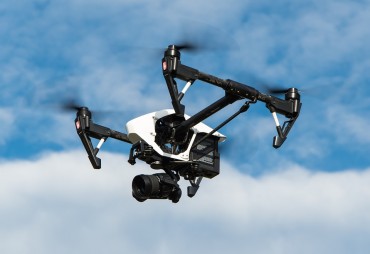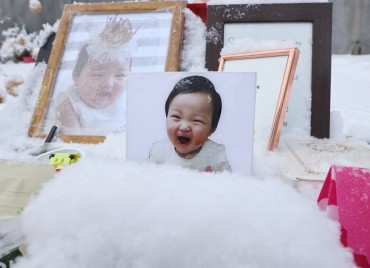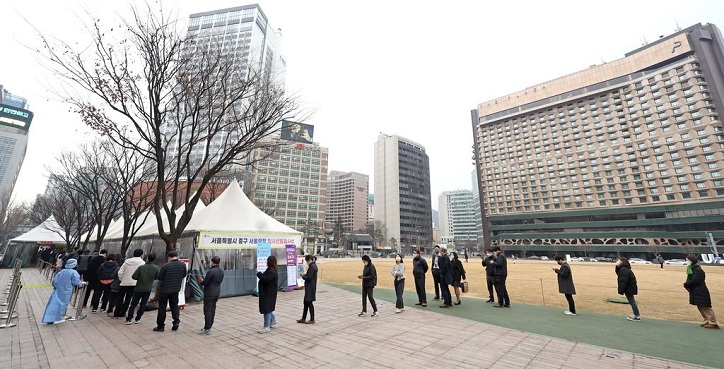
People wait in line to receive tests at a COVID-19 testing station in Seoul on March 11, 2022. (Yonhap)
SEOUL, March 11 (Korea Bizwire) — South Korea’s daily coronavirus cases fell below 300,000 on Friday after spiking to a record high two days earlier, but deaths hit a fresh high amid the omicron surge.
The country reported 282,987 new COVID-19 infections, including 282,880 local cases, raising the total caseload to 5,822,626, according to the Korea Disease Control and Prevention Agency (KDCA).
The omicron-fueled surge in infections has recently led to more COVID-19 deaths, and severe and critical virus cases.
The country confirmed 229 COVID-19 deaths Friday, breaking the previous record of 216 set Saturday. The accumulated deaths came to 9,875, and the fatality rate was 0.17 percent.
South Korea is expected to have a new record total on Saturday. As of 9 p.m. Friday, it had reported 344,712 new cases, already a record by more than 2,000 and an increase of 86,173 from the midnight-9 p.m. window from the previous day.
Cases are counted through midnight and announced the following morning. South Korea has averaged a little over 266,000 cases per day over the past week.
On Wednesday, South Korea initially reported a then-record high of 342,446 cases, which was later adjusted to 342,429, still a record. The accumulated virus cases surpassed the 5 million mark.
For Thursday, the initial announcement was 327,549 cases, but the figure was later changed to 327,538.
Prime Minister Kim Boo-kyum said earlier in the morning that the country is expected to see the omicron wave peak between Saturday and March 22, with daily cases going up to 370,000.
“During that period, the government’s top priority will be reducing the number of critically ill patients and deaths,” Kim said during a COVID-19 response meeting in Seoul.
“To achieve this, we will secure enough hospital beds and operate them efficiently.”
The government, he said, plans to revise the current treatment system for COVID-19 patients to better use scarce medical resources.
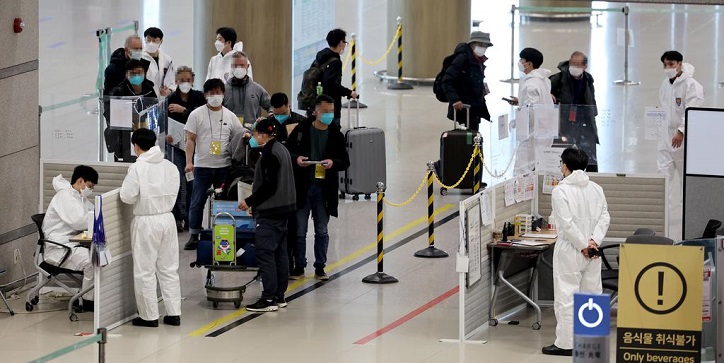
This undated file photo shows people arriving at Incheon International Airport, west of Seoul. (Yonhap)
Starting next week, virus patients hospitalized with minor symptoms will be able to receive their treatment at general hospital wards.
The prime minister also said results from expert-use rapid antigen tests that are conducted by medical institutions will be accepted in officially confirming COVID-19.
Also starting March 21, fully vaccinated South Koreans and foreign visitors from overseas do not need to self-quarantine, except for those from Pakistan, Uzbekistan, Ukraine and Myanmar.
Currently, all people who enter South Korea should self-quarantine for seven days regardless of their vaccine status.
From April, foreign visitors and South Koreans who return home from overseas trips will be allowed to take public transportation from the airport to their destinations. At the moment, private cars and “quarantine taxis” are only permitted as a means of transportation.
It took South Korea more than two years to reach the first 1 million coronavirus cases but only slightly over two weeks to record the next 1 million.
The third, fourth and fifth 1 million cases came even faster, in six, four and five days, respectively.
Severe and critical virus cases came to 1,116, up three from the previous day. The tally’s record high was 1,151 cases on Dec. 29.
The KDCA has recently raised the country’s risk level of the pandemic to the highest point, as omicron is causing record-breaking numbers of new daily cases.
It also scrapped its rigorous contact tracing program, which was successful in containing the spread of the virus in the early stages of the pandemic but is deemed unsustainable amid the unrelenting omicron surge.
It instead shifted its focus to preventing deaths and using medical resources to treat more serious cases by ramping up the use of rapid antigen self-test kits and at-home treatment.

Prime Minister Kim Boo-kyum speaks during a COVID-19 response meeting in Seoul on March 11, 2022. (Yonhap)
Despite the spike in virus cases, the government relaxed part of its antivirus regulations last week to help struggling small businesses. Cafes and restaurants, among others, have been allowed to run until 11 p.m. since Saturday.
Of the locally transmitted cases reported, Seoul reported 56,600 new cases. The surrounding Gyeonggi Province and the western city of Incheon added 72,420 and 17,457 new infections, respectively. Cases from overseas went up 107 to 30,130.
As of the midnight, 31.97 million people, or 62.3 percent of the country’s 52 million population, had received booster shots. The number of fully vaccinated people came to 44.4 million, accounting for 86.5 percent.
“I am concerned that the vaccination drive among people has recently lost steam,” the prime minister said, pleading with the public to get COVID-19 booster shots, which he said provide strong protection against hospitalization.
COVID-19 patients who were under at-home treatment rose 289,232 to 1.31 million, according to the KDCA.
(Yonhap)



